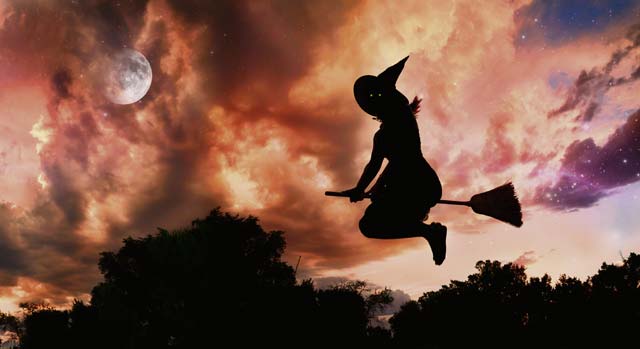
Residents living off base might experience some weird things happening in their neighborhood Sunday night. They must keep a watchful eye on their houses and vehicles since Germans observe “Hexennacht,” or Witches’ Night, April 30.
Legend says that on the night of April 30, evil ghosts represented by cold weather, snow and darkness meet with witches and demons at Blocksberg hill in the Harz mountains. Here they get into mischief before they take off on broomsticks, pitchforks and billygoats at midnight.
Today, it’s a custom for mainly children and teenagers to play tricks on neighbors. They ring doorbells and run off, put mustard on door handles, hide floor mats and trash cans, remove garden gates and wrap cars in toilet paper.
Sometimes, older children or adults do destructive things like lifting drainage covers in the middle of the road or moving traffic signs. Motorists are asked to be very careful at night or the following morning, because these actions create safety hazards and result in property damage. German Polizei will patrol the neighborhoods that night and take appropriate action if necessary.
The origin of witches’ night goes back to Pagan times, when people believed that evil ghosts tried to prevent the “Queen of Spring” from entering the country. Witches and demons were masters of people and things, so people did a lot to protect themselves. They hid billygoats and broomsticks so witches would not be able to ride on them through the night and do evil things. It was an unwritten law that children must not get beaten with a broomstick, because it could be a witch’s tool.
Also, socks were put cross-shaped on children’s beds, pentagrams were put over house entrances or sacred salt was scattered over the threshold. Residents used several herbs known to ban witches to smoke out houses and stables. Herbs included rue, St. John’s wort and juniper.
Another German tradition observed at the beginning of May is to “dance into May.” Various associations and sports clubs sponsor “Tanz in den Mai” with live music in community halls, sports gyms, or other facilities that house dancing halls.
Dances will be offered at 8 p.m. in Erfenbach’s community hall, Kreuzstein 8; and at 7 p.m. in Landstuhl’s Zehntenscheune, Kirchenstrasse 1.
In several villages of the KMC, the May tree will be put up and May fest will be celebrated. Sometimes this ceremony is combined with a village fest.
The May tree usually is a fir with the lower branches stripped and only the treetop untouched. The pole is decorated with colorful ribbons and craftsmen’s trade ornaments like sausages for the butchers, pretzels for the bakers, or carved wooden figures. May poles symbolize the beginning of spring and hope for a good harvest.
Sunday, a May tree will be put up at 7 p.m. on Drehenthalerhof (part of Otterberg), and a witches’ fest will start at 6 p.m.
A May fest with music, arts and crafts, and food specialties will be celebrated from 11:30 a.m. to 8 p.m. at the Dorfplatz in Bruchmuehlbach and at the fire station in Hauptstuhl.
A forest fest will begin at 10 a.m. in Olsbruecken, and a barbecue fest will start at 11 a.m. at the sports field in Heiligenmoschel.
Germany and some other European countries also observe Labor Day May 1. It’s a legal holiday and stores are closed.
In 1890, May 1 was proclaimed as the day of the working class by the first international workers’ congress in Paris. It was a day to fight for an eight-hour workday and other working-class rights.
Nowadays, trade unions and workers meet for assemblies, demonstrations and political speeches.


